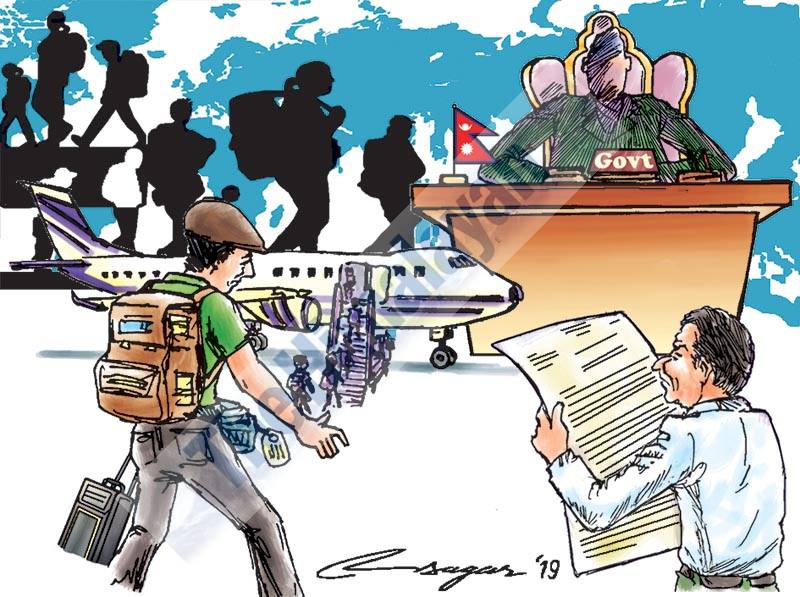Migration for development: Advance policy, institutional coherence
We need to consider the growing impacts of migration on the destination communities. They include mounting pressure on urban congestion, infrastructure, productivity gains and barriers to mobility faced by migrants in accessing public services
In recent years, migration is being increasingly considered as an important development issue. Migration and development are closely linked as they impact one another. More importantly, migration is perceived as a consequence, a driver or an inherent aspect of economic, social, cultural and political factors that influences national development policies and targets.
Migration mainstreaming has received high priority in national development policies and plans in many developing countries. More focus is needed on the intersection of migration and development policies and trends to better understand the actual and potential contributions of migrant communities to sustainable development by reducing poverty in their home countries.
Migration has been considered in the Sustainable Development Goals (SDGs) as well as the New York Declaration for Refugees and Migrants. The Global Compact on Migration (GCM) has called on all states to integrate migration into development planning and sectoral policies at the local, national, regional and global levels.
Over the years, there have been significant efforts to enable the governments and their partners to better measure and make more visible development impacts of migration as well as mitigate the risks for migrants, their families and communities at the origin and destination.
The development partners are supporting national governments to integrate migration into policy planning processes at all levels.
So the capacities of the governments are being enhanced to design, implement and monitor their multi-sector approaches to migration and development.
In this context, Nepal recently carried out a migration governance assessment in consultation with a range of stakeholders to better understand the positioning of migration governance and identify the key gaps and challenges for action. Considering the high flow of Nepali youths to Malaysia and the Gulf countries for foreign employment, managing labour migration to make it safer and economically productive is a high priority for the country.
With support from the International Organisation for Migration (IOM), Nepal has started steps to develop a migration profile by engaging the sectoral line ministries and departments, relevant development partners, professional experts and civil society organisations. A national migration health policy is another landmark in addressing issues of migration and health.
Undoubtedly, public policies play a key role in maximising the benefits and minimising the costs of migration, both in the countries of origin and destination.
Therefore, policy-makers and planners must consider the interaction between migration policies and other public policies to advance policy and institutional coherence at large.
In this context, addressing data gaps and quality issues on migration and development remains a major challenge in most of the developing countries.
The scope of data collection must be expanded by generating data disaggregated by gender, age and sub-national region.
Unfortunately, the social costs of migration are not sufficiently addressed in national migration policies and plans. These mainly include the rights of migrants, effects of migration on gender roles, family cohesion, health and education.
The increasing social risks of family breakdown, fragmentation of social networks and psychosocial stress are still neglected in the major policy domains.
Additionally, in most cases, both regular and irregular labour migrants suffer violence and exploitation.
They are particularly vulnerable due to poor education, language and other social skills and unfamiliarity with social norms, living conditions and laws in the destination countries.
In principle, the rights of migrants are protected by all international human rights instruments and labour standards. At the country level, there is a growing need for real progress in terms of translating human rights commitment into law, policy and practice.
While migrant integration policies are often prioritised during the migration discourse, the provision of economic opportunities and social inclusion for migrants and their families are challenging priorities for developing countries to maximise migration gains. However, there is limited statistical information and comparative cross-country data to measure the existing integration policies. Therefore, it is high time to critically evaluate the existing migrant integration policies to better understand their effectiveness and efficacies for evidence-informed advocacy and actions.
Furthermore, we need to consider the growing impacts of migration on the destination communities.
These primarily include mounting pressure on infrastructure and social services, urban congestion, productivity gains and barriers to mobility, which migrants usually face in accessing public services.
On the other side, internal migration is equally important in many ways for developing countries. The scale of internal migration is obviously huge. So, migration surveys would be very helpful to better understand the links between internal and international migration and broaden the notion of remittances for reducing poverty as well as the prospects for achieving the SDGs.
Bhandari is a PhD candidate at Chulalongkorn University, Thailand






